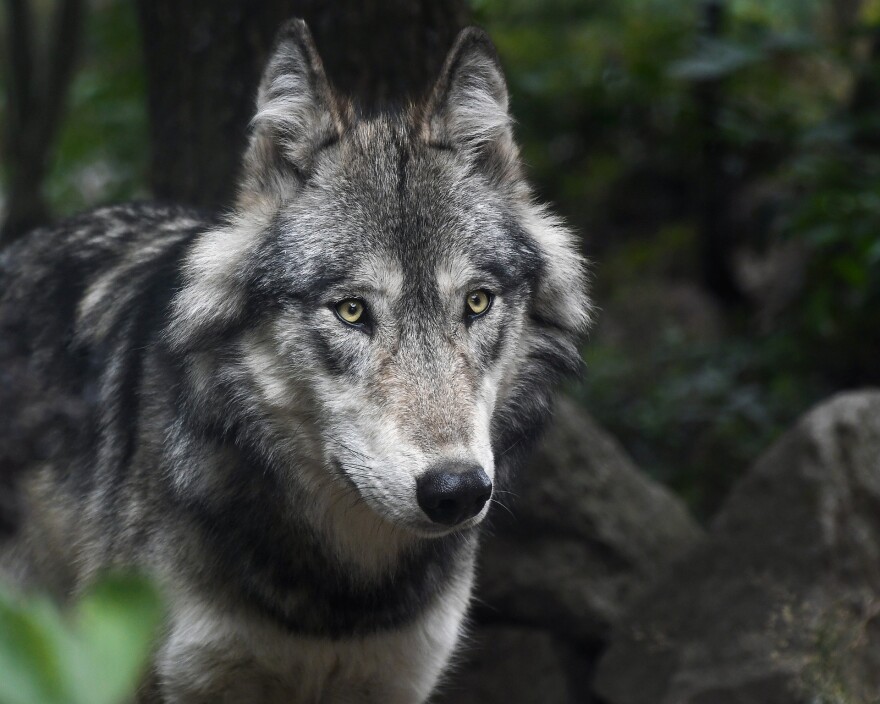Wisconsin is the process of creating a new wolf management plan.
The advisory committee for that plan is holding its second meeting Thursday.
As the state works to create that new plan, many are criticizing how the state has handled wolves since they were removed from the endangered species list in January.
Advocates of a wolf hunt argue the state is being too conservative in its quotas and that wolf population is larger than it should be. Those against a wolf hunt and many in favor of science-based management say the state could be wiping out half the population with just these two hunts less than a year after the species was de-listed.
The state had a rushed wolf hunt in February after it was court ordered. Hunters blew past the 119-wolf quota killing 216 wolves at the time when packs were either mating or just finished.
This has created a lot of uncertainty in the population that’s estimated to be between 944 and 1,377 animals.
Last week, the Natural Resources Board approved a 300-wolf quota for November’s fall hunt, more than double that of the DNR’s recommendation of 130.
Wisconsin’s response to wolf management has differed from neighboring Minnesota and Michigan.
Peter David is a wildlife biologist with the Great Lakes Indian Fish and Wildlife Commission. GLIFWC represents 11 Ojibwe tribes in Minnesota, Wisconsin, and Michigan.
In his role, David has been keeping an eye on each state’s response to the federal de-listing of gray wolves.
David calls the recent decisions regarding wolf management by the Natural Resources Board and the DNR disappointing.
“It’s hard for me to describe this as management at all. It’s really mis-management to suggest slashing the wolf population in half or more in less than a year on the basis of these wolf myths and revenge is really unconscionable,” said David.
The tribe’s stance on wolves is they are sacred and play an important in the environment, especially when it comes to managing deer herds for disease.
David said the tribes are opposed to the recreational hunting of wolves but are open to responsible killings when it comes to things like wolves threatening domesticated animals.
So far this year, the DNR has confirmed wolves have killed more than 65 pet and hunting dogs, calves, and other farm livestock.
Getting wolf threats to animals under control is one the most prominent arguments for the people in favor of a hunt. Farmers have told WXPRit’s not just loss of livestock and livelihood, but the constant worry that wolf will kill a calf or other animal.
While Wisconsin gets ready for its second wolf hunt this year, Minnesota and Michigan have taken a different approach to management since the species was de-listed.
Michigan has a similar wolf population to Wisconsin in the Upper Peninsula. Minnesota’s wolf population is more than double that of Wisconsin’s.
“Yet in neither of these states have we seen this rush to go off and start killing wolves,” said David.
David points to Wisconsin law being one of the biggest issues. The state is required to hold a wolf hunt any time the species isn’t on the endangered species list.
Wisconsin is the only state with such a law.
“In Wisconsin, because of this law, because of the lawsuits that pushed it and because of these attitudes held by a few individuals on the Natural Resources Board, we’ve seen this really mad rush to kill without any good justification,” he said.
An argument those in favor of a wolf hunt make is that the current DNR wolf management plan calls for 350 wolves as a population goal. Wisconsin’s wolf population is at least three times greater than that now.
David said that 350 was a threshold, not a target population as there were only 200 wolves in Wisconsin at the time.
“In the other two states, natural resource professionals are trusted to make decisions on how best to manage these natural resources in the interest of the greater public trust. That’s not really unfolding that way in Wisconsin right now,” said David.
David said both of the other states are talking to stakeholder groups. Minnesota did a public attitude survey and Michigan is considering one, which David would like to see done in Wisconsin.
As one of more than a dozen people on the DNR Wolf Management Planning Committee, David will have a voice in future wolf management.
He does have some hope that tribal views will be respected.
“I used to say that there was no area that there was greater difference between the state and the tribes in terms of resources management than when it came to ma’iingan or wolves,” said David. “I don’t think that’s really as true as I once believed, because a majority of people in the state public hold views that are very similar by those held in the tribal community.”
David hopes as wolf management plans move forward, those views are taken into consideration and that the new plan will be based on ecological, biological, and social science.
Note: An earlier version of this story incorrectly said the NRB approve a 200 wolf quota for this fall.






